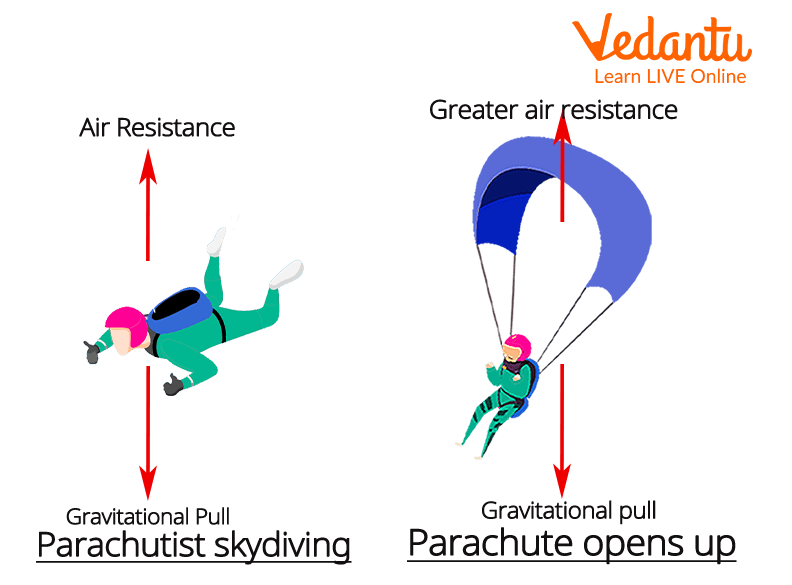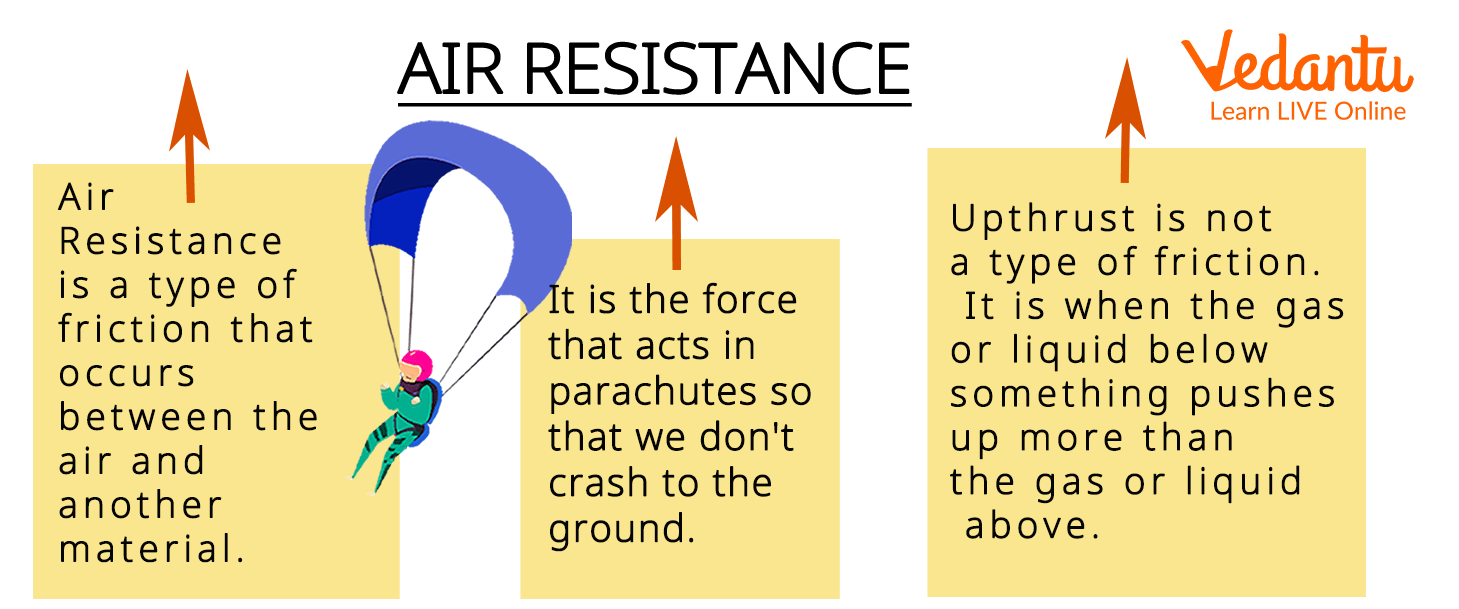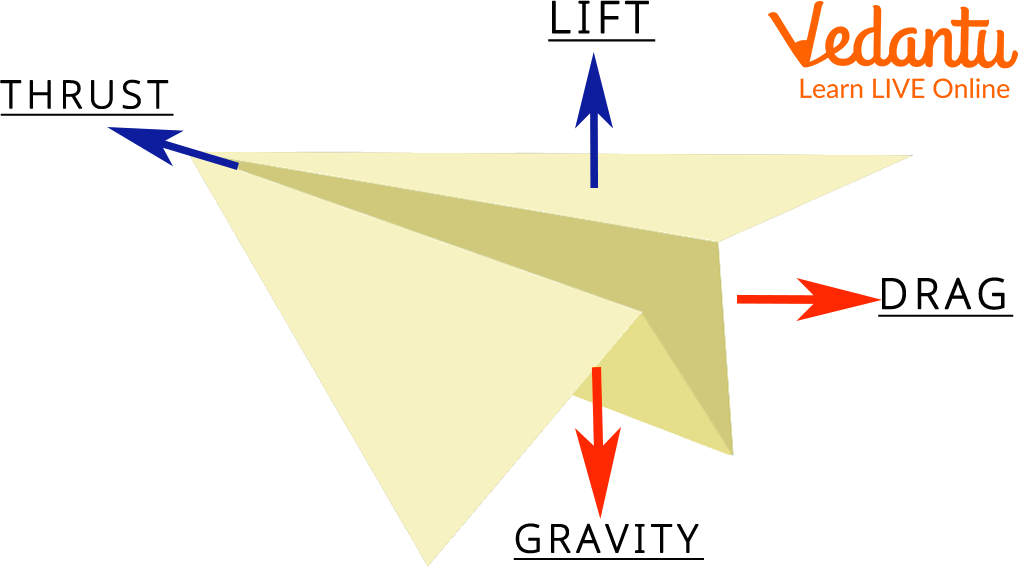




What is Air Resistance?
Air resistance is a force caused by air. The air patches hit the front of an object, causing it to decelerate down. The lesser the face area, the lesser the number of air patches hitting the object, and the lesser the overall resistance.
Air resistance is a kind of division (a force that opposes move) that occurs between air and another object. These forces that the object exploits as it passes through the air. Air resistance and gravity are the two fixed forces of nature that shift on anything on Earth.
For example, when an aeroplane flies through the air, the air patches are pressing against the aeroplane, making it harder for the aircraft to move.
When you see a kind of fall, it's greatly affected by air resistance. It has lots of face areas for the air to make connections with and lacks the weight to overcome the air resistance.

Air Resistance in The Sky
What is The Resistance to an Air Gap?
An air gap is fully separating, meaning it has actually high electrical resistance * 109 * m since it contains oxygen and nitrogen bits. There are no free electrons in an air gap. The operation of an actual high implicit ionises the air and it becomes channelling, the grade needed is 3x106 V/m.
What is Air Resistance for Kids?
Air resistance is the frictional workforce air exerts against a shifting object. As an object shifts, air resistance slows it down. The faster the object stir, the lesser the air resistance applied against it. Air resistance affects all shifting objects, from aeroplanes, rockets, and trains to autos, bikes, and indeed living effects.
An object’s shape and face area can increase or drop the degree of air resistance it encounters. A feather will fall slower than a mattered ball because the feather has a lesser face area. Because it can spread its weight over a larger area, the feather encounters lesser air resistance and falls more slowly.

Air Resistance
Air Resistance Force
Air resistance force is a force that is applied by air. Air resistance force is similarly known as drag. The moment and the intensity of the air resistance force are directly proportionate to the speed of the shifting object. This is a natural force of personality. It's commensurable to the face zone of the object.
Air Resistance Force Examples
1. Riding a Cycle
When a cycle rider moves in the forward direction, a force of disunion wielded by the air tends to decelerate down its speed. This force of disunion is applied to the rider’s face and body from the direction reverse to the direction of motion of the cycle. When the rider increases his speediness, the air resistance workforce increases proportionally. huddling down on the cycle helps the rider to break the effect of air resistance force and shift with an advanced speed.

Riding a Cycle
2. Parachute
Air resistance force plays a genuinely major part in the deed of a parachute. When a person jumps down while skydiving and opens up his/ her parachute, the air resists the spring. Due to this resistance handed by the air, the speed with which the parachute approaches the ground slows down. The gravitational labour force pulls the parachute in a downcast order, whereas an air resistance force is related to the parachute in an upward order.

Parachute
3. Stepping in Storm
It's frequently delicate to step in cyclonic rainfall. While stepping against the order of the wind, a significant quantum of resistance is sensed by the person that causes hardness in stepping. The equal case makes it delicate to grip a marquee in hand in the presence of a strong wind.

Stepping in a Storm
4. Feather Slipping on the Ground
A feather, when falling on the ground from a given height, tends to ride and shift sluggishly towards the ground. The labour force attracting the feather towards the ground is the gravitational labour force, while the labour force that resists the fall and stir of the feather is the air resistance force.

Feather Sleeping on Ground
5. Paper Plane
A paper aeroplane floats easily in the air if cooked duly and to attain this, the frontal side of the paper aeroplane is framed edgy. This sharpened edge helps the paper aeroplane to slice through the air and space the air resistance force. This helps the aeroplane to lend easily.

Paper Plane
Summary
Air resistance force is a drive or drag against a stir of a thing. Air resistance happens to numerous large things, similar to buses, planes, and gormandize shifting things. We generally don’t see air resistance, but on major things we do.
Air resistance is a force of disunion on effects as it moves through the air, it opposes the thing’s stir and slows it down.
FAQs on Air Resistance
1. How does air resistance work?
A force is a drive or pull performing upon an object. There are eight distinct kinds of forces, one of the forces is air resistance. Air resistance force happens when air is driving against a shifting object. The force constantly occurs against the stir of an object.
2. In what direction does air resistance act on an object that is falling straight down?
Air resistance pushes up while graveness attracts an object down. This is right for objects slipping directly down. However, also air resistance would exist contrary If the object existed slipping left or right. If both graveness and air resistance wouldn't exist air resistance! Air resistance is contrary to graveness for an object slipping below. In other words, it can be said that it acts in the opposite direction to gravity.
3. What two factors affect air resistance?
Size and Shape are the two agents that affect air resistance. Air resistance works with the face field, the further air resistance. suppose around when you drop two pieces of paper one wrinkled and one pier. Air resistance is a force of disunion on effects as it moves through the air, it opposes the thing’s stir and slows it down.
The wrinkled one falls briskly because there's lower air resistance performing on the paper.









